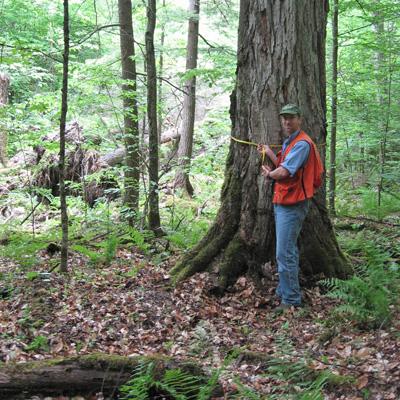The Vermont Forest Ecosystem Management Demonstration Project

Disturbance- or structure-based forestry practices have been proposed as alternatives for maintaining biological diversity across managed forest landscapes. In the northern hardwood forests of the eastern United States and Canada, this includes managing for late-successional or old-growth structure, which is vastly under-represented compared to pre-European settlement. Silvicultural practices more closely approaching natural forest disturbances should accelerate rates of late-successional structural development and related ecological functions, while providing economic returns from low-intensity timber harvests.
The Vermont Forest Ecosystem Management Demonstration Project uses Structural Complexity Enhancement (SCE) to accelerate development of old-growth forest characteristics, including multi-layered tree canopies; patchy tree density; and many large-diameter trees, dead trees, and downed logs. At two northern hardwood forests in Vermont, NSRC researchers are comparing SCE with two conventional silvicultural systems (single-tree selection and group-selection). Researchers recorded logging expenses, revenue, and timber market conditions and collected forest structure and biodiversity (plants, salamanders, birds, and beetles) data for two years pretreatment and four years post-treatment. They used computer simulation modeling to make 50-year projections of stand development.
Researchers predict that late-successional characteristics, including aboveground biomass (and carbon storage capacity), will develop to a greater degree, and rates of large tree development will greatly accelerate using SCE. Elements of biological diversity associated with late-successional forests, including sensitive and interior dwelling plants and birds, salamanders, and certain carabid beetles, were least impacted by SCE; in some cases populations responded positively to habitat conditions created by all three treatments. Unconventional silvicultural approaches will not maximize revenue compared to more intensive harvesting practices but can provide moderate economic return if site quality and market conditions are conducive.
Download printable version [PDF]
Download full final report [PDF]
